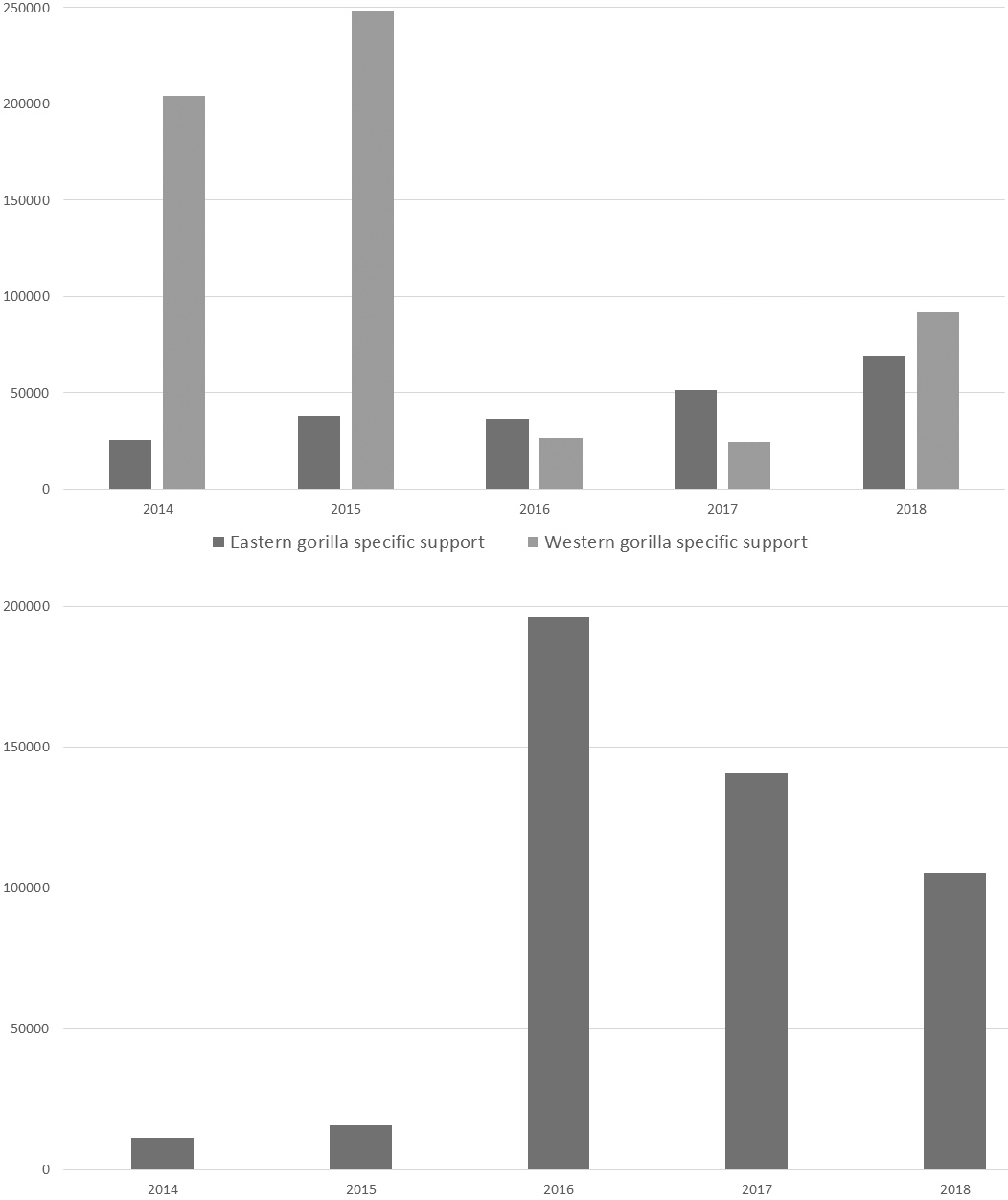How Is the EAZA Great Ape TAG Linked to in situ Conservation?
Categories: Journal no. 59, Gorilla Journal, Protective Measures, Zoos
Modern zoos are institutions that contribute towards conservation education through the conservation and research of living beings and their natural habitats. Conservation education and the research activities of zoos have the aim of helping endangered animal species all over the world. They work collaboratively, grouped by geographic region, facilitating knowledge and resources to help obtain the best results.
The European Association of Zoos and Aquaria (EAZA) has 423 member zoos in 48 countries, more than 140 million people visit these zoos every year. One of the zoos' main goals is to establish and maintain sustainable and genetically healthy populations of threatened animals, whereby the welfare of individual animals has the highest priority. These zoo populations work as ambassadors for their endangered conspecifics in the wild. Educational work within the zoos increases the interest of people to save nature. During their zoo visit they are not only informed about endangered animals but are also encouraged to support conservation projects in the wild. In addition to that, several in situ conservation projects are financed by zoos directly. Zoo populations can provide animals for reintroduction into the wild, if necessary, as a conservation tool. The One Plan Approach helps to optimize global conservation work and facilitate a stronger link between ex situ and in situ conservation. As a result of this zoos have gained a stronger role in global conservation during the last few years.
Within the European zoo association, Taxon Advisory Groups (TAG) are responsible for management, conservation, research and husbandry of systematic groups of animals. The Great Ape TAG Vision statement clearly says that "We are committed to ensuring the long-term survival of ex situ and in situ healthy and viable bonobo, chimpanzee, gorilla, and orang-utan populations."
It is our mission "to maintain self-sustaining and healthy populations of all the taxa of great apes […], and to encourage and promote their conservation in the wild".
For that reason, one of the main goals of the Great Ape TAG is the establishment of strong links between ex situ and in situ conservation. While we continue improving husbandry for great apes in zoos we emphasize at the same time the significance of preserving the wild populations and their habitat by actively contributing to this effort.
EAZA zoos can assist field conservation efforts for great apes in a number of ways, for example, by raising the awareness of their visitors regarding the plight of wild great apes, including the fact that they are critically endangered and the reasons why; and by funding field conservation efforts through the numerous NGOs working in the field.
The TAG, in cooperation with the relevant EEPs and their conservation advisors, promotes conservation issues and supports "ex situ" and "in situ" conservation initiatives relevant to species in the TAG. It is open to a closer cooperation with IUCN, GRASP, PASA and other reputable conservation organizations in order to exchange knowledge and experience, to discuss issues concerning ape species, and to work closer together to help maintain apes in the wild.
In 2010, EAZA launched an Ape Fund Campaign to support 26 in situ projects for apes until 2018 for a total amount of 573,084 euros.
A new tool to evaluate the contribution from EAZA institutions to in situ conservation projects is the EAZA Conservation Database. The contribution to great ape projects has been increasing during the last few years as shown in the figures.
Collaboration and communication with representatives from conservation organisations, such as IUCN, GRASP and PASA, has been quite active during recent years and it is being further reinforced to help improve the results of our common goals of conservation, education and research.
Maria Teresa Abelló Poveda and Sandra Reichler
The European Association of Zoos and Aquaria (EAZA), with 423 members in 48 countries throughout Europe and the Middle East, is the largest professional zoo and aquarium association in the world, with approximately 140 million visitors per year. Re-connecting with nature and re-establishing our relationship with the world's species, to whom we owe our very existence, is essential if we are to overcome the many environmental and societal challenges ahead.

